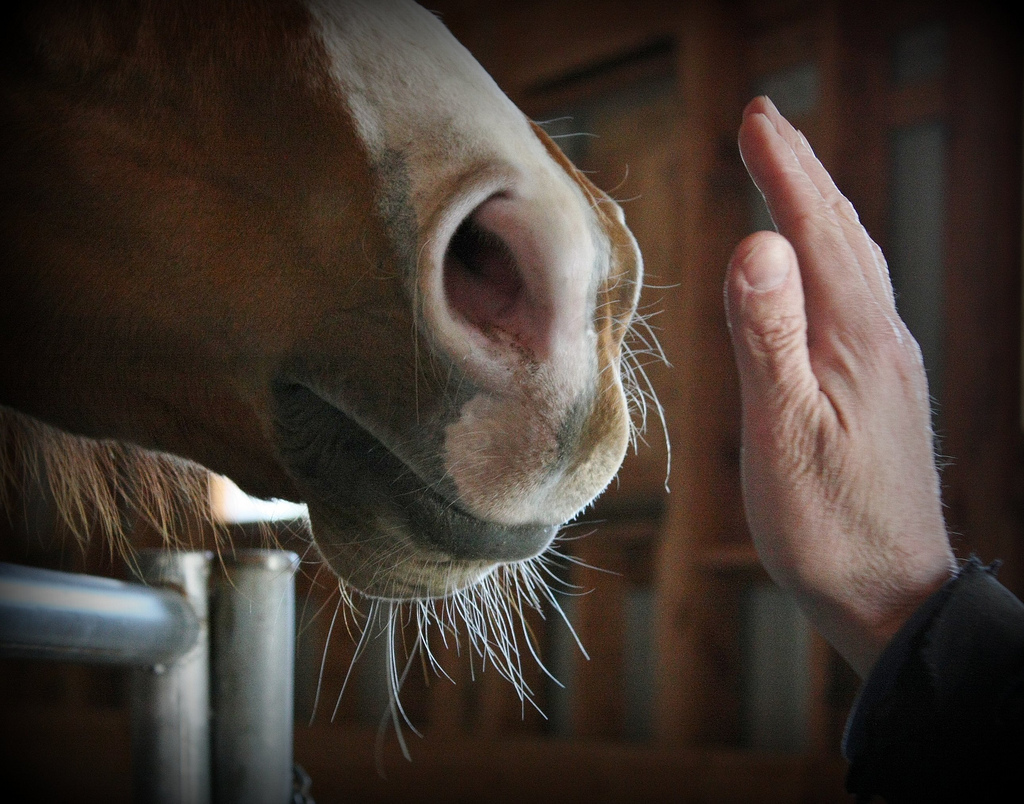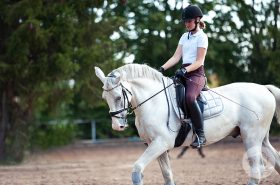When people tell me they are having troubles with their horse, it’s almost always followed by an excuse. “My horse won’t go out on the trail because he doesn’t get along with your mare.” “If you turn your back on my mare she’ll nip at you because you’re standing too close.” “My gelding won’t load because he doesn’t like small spaces.” Or my personal favorite, “He won’t let me catch him in the pasture because he was spoiled before we got him”.
All I hear are problems that stem from lack of groundwork and in turn, respect.
As horse owners, we need to take responsibility for their actions and fix the problem rather than making the excuse. I’m sure we have all been guilty of this at one point or another in our lives. I can promise you I have. My excuses would always go back to, “she’s just a moody mare!” BAM! That’s so much easier to say than, “well she won’t do (fill in the blank) because I’ve failed to teach her (blank).
So, let’s get back to the basics. If you are having troubles with your horse in the saddle, being aggressive, loading/ unloading or pushing you around on the ground; groundwork can almost always fix it. Here are a few suggestions to aid you and your noble steed:
Leading
It’s as simple as the name itself. You lead the horse from one point to another. If you are having difficulties with your horse trusting you, partner position is where you should begin. Partner position is when you stand/ walk at the horse’s shoulder. That shows him that you both are a team, trusting in one another. You are side by side experiencing the ground beneath you at the same pace.
If you are having troubles with your horse pushing you, I suggest you begin leading him/her from the lead position. Lead position is where you walk in front of your horse. You are in front of him so he can learn to respect your personal space. You set the tone of this lead, where you’re going and how fast (or slow) you’re going to get there.
 Touch
Touch
For example, after my mare has just foaled and it’s a foal I intend on raising I do the initial “imprinting” (I’ll explain that in a later article). After the imprinting is done, everyday I touch that foal. Everywhere. Head, ears, nose, chin, chest, neck, back, stomach, legs and tail. As he becomes more accepting of the touch, he beings to trust.
You can do this with your horse to improve respect and lessen his/her aggression; as your horse will come to understand you are not touching him in a threatening manner but in a way that relaxes him and feels good.
I love walking up to a new horse and after an initial hello hand sniff, I can touch his/her ears. That is the ultimate trust in a horse! Plus, when you touch your horse regularly, just to say hello, you will begin to learn what spots he/she loves (my mare LOVES her butt cheek to be scratched), doesn’t like, favorite itch spots and you’ll have a good idea if something doesn’t seem right like a sore muscle, irregular breathing, dehydration, or a lump (God forbid) that wasn’t there yesterday.
Yielding to pressure
Direct pressure is when you ask your horse to move forward, step back, pick up his hooves, turn his head to flex, side pass or anything else that basically moves your horse while you are applying physical pressure.
Indirect pressure is when you use your body language and movements to suggest a movement. One example most of us are all familiar with is the, “ let’s throw our arms around like crazy ladies while we try to move him/her away from the feeder so we can toss the hay in without it hitting the ground”. If you throw your arms around, he will step back. (Since it involves feed he won’t stay away for long, but you get the idea of him moving away without you physically touching him.)
Round pen work.
This is where I like to incorporate all the above bullet points into one. Never underestimate the power of a round pen, long line, and lunge whip! Before I begin my lunging I lead him/her into the corral. We walk for a few seconds until we are in the center on the corral. This is when I begin to give a small, soft touch all over giving him lots of love and a few positive phrases about our upcoming workout sesh. Lastly, I flex my horse’s neck using direct pressure. (Some experts say this should be done after lunging so your horse is more supple and willing to give into submission. Personally, I don’t expect my horse to give me a nice, strong flex prior to lunging so I don’t ask for much. I also flex again afterward). Remember what is done on one side MUST be done on the other, starting from the beginning.
After a good leading, touching and yielding to the pressure we begin our lunging which consists of a calm and collected walk, trot and canter/ lope. At this point, your horse should be giving you his undivided attention and should have the idea that you are in charge. I start out with a walk in each direction. This should give him/her a little warm up! Once again, whatever is done on one side must be done on the other. You will hear me say that time and time again!
Then we move to a trot. If he/she is feeling his oats he/she might throw some bucks and that’s fine but after a few rounds he/she should calm down and be giving you a controlled trot. If not, get back down into a walk then ask again for a trot. Eventually, you guys will get there. After a few good rotations, stop and switch sides. Once a walk and trot has been successfully completed on both sides fairly easy with little to no hiccups you can move forward into a canter/lope. OR you can stop there and go back down to a walk in both directions for a cool down period. Cooling down is absolutely necessary even if your horse doesn’t look “sweaty’ or “hot.”
*It is important to note that round pen work is double the amount of riding. If he/she has been at a trot for five minutes while lunging that equals ten minutes in the saddle. Be careful to not over do it!
Only go onto a canter if you guys have mastered a walk and trot. At this point he should be yielding to your indirect pressure in the round pen (the position of your arms, use of the lunge whip without it touching him and your words. I can write a separate article on indirect pressure during round work if you guys desire that info) If not, don’t give up and try again tomorrow. Remember, you always want to end on a good note even if that means baby steps! Nothing is mastered overnight. I promise you, the reward is worth the wait!
In my experience, if I have been having troubles in the saddle or with behavior this groundwork routine usually breaks the cycle and allows us to start working as a team again. I use this routine for up to 30 days. Consistency is key with horses. The more consistent you are, the more responsive your horse is, and the quicker you two get back in the swing of things!
**Emily Griffin is a mama to two stunning daughters, a wife to her hunky husband, and an Arizona native. She resides in a very small town in Southeastern, Arizona. Her days consists of homeschooling, horses, and balancing the fine line between motherhood and insanity. She definitely appreciate the outdoors, the smell of wet dirt, and the lovely sunsets the Arizona deserts have to offer. Her life is unbridled in every sense of the word, but she wouldn’t have it any other way!



